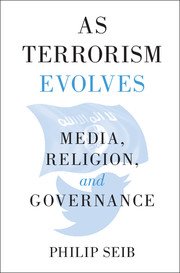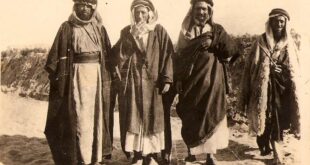
Issue 25, winter/spring 2018
https://doi.org/10.70090/DB18BRTE
Seib, P. (2017). As Terrorism Evolves: Media, Religion and Governance. Cambridge, U.K.:
Cambridge University Press.
USC journalism professor Philip Seib has done a great service for those who follow media-driven events connected with terrorism inspired by Middle East- and Africa-based terror groups that have, for many, become household names, such as Al Qaeda and ISIS; two well known terrorist parent organizations.
Seib’s publication is valuable for many reasons. Of course, as will be noted later, there is the specific content, but the succinct 188-page book in his clear insightful style is never lost in lengthy philosophical or political theory. The book discusses religious fervor, politics, and financial forces that have produced events such as 9/11; ISIS in Syria, Iraq, and Libya; and terrorist attacks in the Middle East and Europe -- always with a focus on how events are filtered with increasing sophistication via social media and ultimately through the world’s major news outlets.
As one who occasionally skips book introductions, I found Seib’s 16-page introduction to be worthwhile because it offers insight into his own experience and motivations for writing the book. There are 5 chapters. Chapter 1, The Nature of the Beast, first notes that during the Cold War years we essentially knew who the enemy was, where the enemy was, and what weapons the enemy had. Moving to a more contemporary era, the author notes that terrorists often have elusive beginnings and locations. If one wished to negotiate with them, were would one start? It is often almost impossible to defend against a determined suicide-vest wearer or a vehicle driver aiming at a group of unsuspecting strollers. In Chapter 2, In God’s Name, we are reminded that the oft-used term Holy War is not new. For 400 years or so the Crusaders moved from Europe to the Middle East with religious enthusiasm that may still be unmatched in duration and fervor. When they captured Jerusalem in 1099, they killed most Jewish and Moslem inhabitants. A strength of this chapter is a discussion of how some Islamic groups have been successful in reconstructing their religion to suit terrorist goals.
Chapter 3, Organizing Terrorism, examines the beginnings of contemporary terrorism linked to the Middle East. He notes the 1972 Munich Olympic Games and the killing of Israelis by the Black September Movement that motivated Israel’s Operation Wrath of God, since featured in American novelist Daniel Silva’s books. Extensively examined herein are Al Qaeda, Boko Haram, Hezbollah, and ISIS, with emphasis on financing and those who are attracted to and harmed by these groups. Chapter 4, Media Weaponry, is a must-read for diplomats, academics, and journalists who seek a coherent to-the-point discussion of how modern information technology has been used by those once thought too unsophisticated to influence followers and public opinion via the world’s major news outlets. The final chapter moves to the future, What Lies Ahead.
The book’s detail and insight that some readers may be unaware of are commendable. Quoting Seib and Seib quoting others:
- “Overall, sophisticated terrorist leaders understand the news media better than most news professionals understand terrorism” (p. 112).
- After the beheading of American businessman Nicholas Berg, “[t]he video of this murder was posted on the web on May 11, 2004, and within twenty-four hours it had been copied onto other sites and downloaded more than 500,000 times” (p 116).
- One well known Arab terrorist leader wrote to another: “I say to you that we are in a battle, and that more than half of this battle is taking place in the battlefield of the media” (p. 117).
- “Yopmail, which has been referred to as ‘the burner phone of email,’ gives users an e-mail address that can be used for eight days without registering it” (p. 121).
- Noting the recruiting efforts of Al Qaeda and ISIS in European prisons, “In France, where about 8 percent of the national population is Muslim, 50 to 60 percent of the country’s prison inmates are Muslim. Those convicted of terrorism-related charges often become in-house bosses, dictating behavior (such as forbidding listening to music) and supervising instruction in their version of Islamic principles” (p. 153).
Finally, Professor Seib notes a frequently overlooked fact -- that the often broken and dysfunctional governments in the Middle East and Africa offer both reasons and a haven for terrorist recruiting and training.
This book could be a must-read for some international media classes as well undergraduates and graduate students in schools of diplomacy and should be in the possession of all news organizations that cover modern-day terrorism.
 Arab Media & Society The Arab Media Hub
Arab Media & Society The Arab Media Hub





